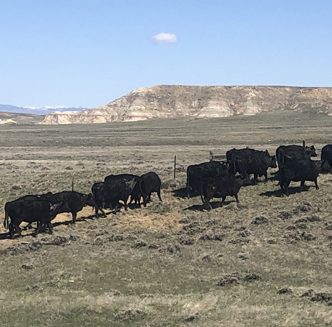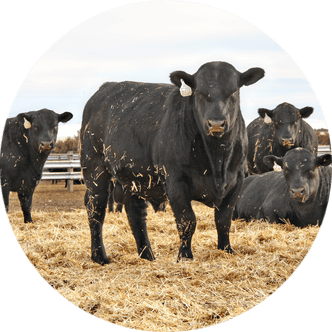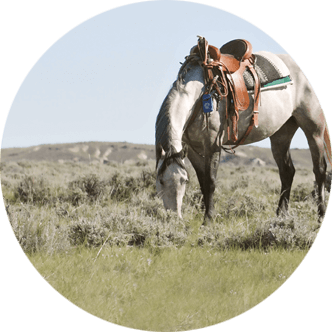Spring Acreage Outlook: USDA NASS provides outlook for 2025 spring planting season

The first signs of spring are starting to emerge, meaning growers across the Cowboy State will soon turn their attention to spring planting, if they haven’t already.
And with spring fieldwork just around the corner, more information is coming out on what producers can expect during this year’s planting season.
Climate outlook
According to the April 1 U.S. Drought Monitor report, drought conditions have recently trended toward improvement across the state of Wyoming.
While the amount of land rated abnormally dry covered 25.6 percent, up six percent from March 25, moderate drought improved to 30.8 percent, compared to 34 percent on March 25, and extreme drought improved to 9.5 percent, compared to 13 percent on March 25.
“Precipitation across the High Plains was near normal, but a series of storms occurred across the Wyoming and Colorado Rockies and a mid-March blizzard swept across central and eastern Nebraska and southeastern South Dakota, leaving these areas with precipitation amounts of one to two inches above normal for March,” reads the National Drought Mitigation Center’s Drought Climate Summary for March 2025.
Additionally, the most recent Wyoming Crop Progress and Condition Report, published by the U.S. Department of Agriculture’s National Agricultural Statistics Service (NASS) on April 7, notes temperatures across the state were colder than normal, ranging eight degrees Fahrenheit below average to near normal during the week.
“Reports from Weston County indicated some moisture was received recently, causing pastureland to start turning green with very slow amounts of observed growth present. Reporters have noted concerns for their winter wheat growth and last year’s newly planted alfalfa,” NASS notes.
“Lincoln County reports area-wide snowpack at near median, while livestock producers were monitoring heavy calving and lambing. Reports from Goshen County indicated a successful calving season so far, aided by the decent weather and moisture received the past week, which is refilling the soil profile,” NASS continues.
The agency also reports growers in Platte County have detailed little precipitation, high winds, low ground temperatures and sporadic daytime temperatures ranging from 70 degrees Fahrenheit to below freezing.
“The county was still suffering from the systemic drought carried over from 2024, but spring planting is underway for barley,” NASS states.
In-state prospective plantings
A separate report published by NASS on March 31 highlights prospective plantings across the state of Wyoming as of March 1.
The report notes Wyoming growers intend to plant 70,000 acres of corn for all purposes in the coming growing season, a number that is down 15,000 acres, or 18 percent, from last year’s actual plantings.
Additionally, Wyoming growers intend to plant 57,000 acres of barley in 2025, down 17,000 acres, or 23 percent, from last year’s actual plantings.
If realized, these numbers would represent the lowest corn planted area since 1970 and the lowest barley planted area since 1926, according to NASS.
“Winter wheat seeded last fall for harvest in 2025 is estimated at 110,000 acres, unchanged from the 2024 crop. Producers in the state intend to harvest 950,000 acres of all dry hay this year, an increase of 60,000 acres from the acreage cut for dry hay in 2024,” reads the report. “The area planted to sugarbeets is expected to total 32,000 acres, up 300 acres from 2024.”
National acreage outlook
At the national scale, the same NASS report mentions corn planted for all purposes in 2025 is estimated at 95.3 million acres, up five percent, or 4.73 million acres, from 2024. Compared to last year, planted acreage is expected to increase or remain unchanged in 40 of the 48 states expecting a corn crop.
In CoBank Knowledge Exchange’s Spring Acreage Outlook, published on Feb. 20, Tanner Ehmke, CoBank’s lead economist for grains and oilseeds, notes statistical regression analysis and conversations with cooperatives and merchandisers across the U.S. have indicated corn may pull acres from soybeans, spring wheat, cotton and grain sorghum this planting season.
This is likely due to the crop’s increase in price competitiveness over the past several months amid tight global stocks, an impressive export pace, record-high ethanol production and profitable feeding margins in the poultry and livestock sectors, Ehmke shares.
“Notably, low hay prices are expected to shift acres out of corn harvested for silage to corn harvested for grain, raising the corn-for-grain harvested acreage to 87.06 million acres, up five percent, while even some perennial alfalfa acres in rotational transition may also migrate to corn for grain,” Ehmke explains.
On the other hand, NASS notes producers have suggested they intend to plant a record-low 2.32 million acres of barley for the 2025 crop year, down two percent from 2024.
Wheat acreage is also expected to fall, with 2025 all wheat planted area estimated at 45.4 million acres, down two percent from the year prior. According to NASS, if realized, this would represent the second-lowest all wheat planted area since 1919.
NASS further notes 2025 winter wheat, at 33.3 million acres, is down two percent from the previous estimate. Of this total, about 23.6 million acres are hard red winter wheat, 6.09 million acres are soft red winter wheat and 3.66 million acres are white winter wheat.
For 2025 spring wheat, NASS expects area planted at 10 million acres, down six percent from the previous estimate. Of this total, nearly 9.4 million acres are hard red spring wheat.
Ehmke points out this is likely due to struggling wheat prices and a greater national supply following last year’s large harvest.
“Most of the reduction in spring wheat acres will go to corn, though soybeans will also stand to gain some wheat acres,” he states. “However, potential major losses to the Russian crop and losses to the U.S. winter wheat crop may quickly change the market dynamics for wheat with the world wheat balance sheet already historically tight.”
The NASS report concludes by highlighting U.S. producers’ intention to harvest 4.5 million acres of all hay in 2025, down two percent from the year prior, and sugarbeet acreage for the 2025 crop year is estimated at 1.13 million acres, up three percent from 2024.
In addition, Ehmke notes soybeans are expected to experience the biggest loss of acreage nationwide, while acres planted with cotton and grain sorghum are also likely to fall.
Hannah Bugas is the managing editor of the Wyoming Livestock Roundup. Send comments on this article to roundup@wylr.net.





